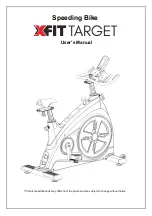
44
SEBU8325-01
Maintenance Section
Refill Capacities
(Table 16, contd)
Lubricity corrected
wear scar diameter at
60 °C (140 °F).
(7)
mm
0.46 maximum
D6079
“ISO”12156-1
(1)
This specification includes the requirements for Ultra Low Sulfur Diesel (ULSD). ULSD fuel will have
≤
15 ppm (0.0015%) sulfur. Refer to
“ASTM D5453”, “ASTM D2622”, or “ISO 20846, ISO 20884” test methods. This specification includes the requirements for Low Sulfur
Diesel (LSD). LSD fuel will have
≤
500 ppm (0.05%) sulfur. Refer to following:“ASTM 5453, ASTM D2622”, “ISO 20846”, and “ISO 20884
test methods”.
(2)
A fuel with a higher cetane number is recommended in order to operate at a higher altitude or in cold weather.
(3)
“Via standards tables, the equivalent API gravity for the minimum density of 801 kg / m
3
(kilograms per cubic meter) is 45 and for the
maximum density of 876 kg / m
3
is 30”.
(4)
Regional regulations, national regulations, or international regulations can require a fuel with a specific sulfur limit. Consult all applicable
regulations before selecting a fuel for a given engine application. Perkins fuel systems and engine components can operate on high sulfur
fuels. Fuel sulfur levels affect exhaust emissions. High sulfur fuels also increase the potential for corrosion of internal components.
Fuel sulfur levels above 0.5% may significantly shorten the oil change interval. For additional information, refer to this manual, “Fluid
recommendations (General lubricant Information)”.
(5)
The values of the fuel viscosity are the values as the fuel is delivered to the fuel injection pumps. Fuel should also meet the minimum
viscosity requirement and the fuel should meet the maximum viscosity requirements at 40 °C (104 °F) of either the “ASTM D445” test
method or the “ISO 3104” test method. If a fuel with a low viscosity is used, cooling of the fuel may be required to maintain 1.4 cSt or
greater viscosity at the fuel injection pump. Fuels with a high viscosity might require fuel heaters in order to lower the viscosity to 4.5
cSt at the fuel injection pump.
(6)
Follow the test conditions and procedures for gasoline (motor).
(7)
The lubricity of a fuel is a concern with low sulfur and ultra low sulfur fuel. To determine the lubricity of the fuel, use the “ISO 12156-1
or ASTM D6079 High Frequency Reciprocating Rig (HFRR)” test. If the lubricity of a fuel does not meet the minimum requirements,
consult your fuel supplier. Do not treat the fuel without consulting the fuel supplier. Some additives are not compatible. These additives
can cause problems in the fuel system.
NOTICE
Operating with fuels that do not meet the Perkins rec-
ommendations can cause the following effects: Start-
ing difficulty, poor combustion, deposits in the fuel in-
jectors, reduced service life of the fuel system, de-
posits in the combustion chamber, and reduced ser-
vice life of the engine.
Engines that are manufactured by Perkins are certified
with the fuel that is prescribed by the United States En-
vironmental Protection Agency. Engines that are man-
ufactured by Perkins are certified with the fuel that
is prescribed by the European Certification and oth-
er regulatory agencies. Perkins does not certify diesel
engines on any other fuel.
Note:
The owner and the operator of the engine has
the responsibility of using the fuel that is prescribed
by the Environmental Protection Agency (EPA) and
other appropriate regulatory agencies.
Diesel Fuel Characteristics
Perkins Recommendations
Cetane Number
Fuel that has a high cetane number will give a shorter
ignition delay. This will produce a better ignition
quality. Cetane numbers are derived for fuels against
proportions of cetane and heptamethylnonane in the
standard CFR engine. Refer to “ISO 5165” for the
test method.
Cetane numbers in excess of 45 are normally
expected from current diesel fuel. However, a cetane
number of 40 may be experienced in some territories.
The United States of America is one of the territories
that can have a low cetane value. A minimum cetane
value of 40 is required during average starting
conditions. A higher cetane value may be required
for operations at high altitudes or in cold-weather
operations.
Fuel with a low cetane number can be the root cause
of problems during cold start.
Viscosity
Viscosity is the property of a liquid of offering
resistance to shear or flow. Viscosity decreases with
increasing temperature. This decrease in viscosity
follows a logarithmic relationship for normal fossil
fuel. The common reference is to kinematic viscosity.
This is the quotient of the dynamic viscosity that is
divided by the density. The determination of kinematic
viscosity is normally by readings from gravity flow
viscometers at standard temperatures. Refer to “ISO
3104” for the test method.
The viscosity of the fuel is significant because fuel
serves as a lubricant for the fuel system components.
Fuel must have sufficient viscosity in order to
lubricate the fuel system in both cold temperatures
and hot temperatures. If the kinematic viscosity of the
fuel is lower than 1.4 cSt at the fuel injection pump
damage to the fuel injection pump can occur. This
damage can be excessive scuffing and seizure. Low
viscosity may lead to difficult hot restarting, stalling,
and loss of performance. High viscosity may result in
seizure of the pump.
Содержание DB 460
Страница 2: ......
Страница 4: ......
Страница 6: ......
Страница 22: ......
Страница 48: ...48 3 SAFETY PRECAUTIONS id DB 460 REV 00 02 01 2015 VEHICLE EXTERIOR ...
Страница 110: ......
Страница 154: ......
Страница 166: ...166 TECHNICAL ANNEXES DB 460 REV 00 02 01 2015 id HYDRAULIC DIAGRAM ...
Страница 168: ......
Страница 169: ...SEBU8325 01 July 2012 Operation and Maintenance Manual 1104D Mech Industrial Engine NK Engine NL Engine NM Engine ...
Страница 252: ... 2012 Perkins Engines Company Limited All Rights Reserved ...
















































